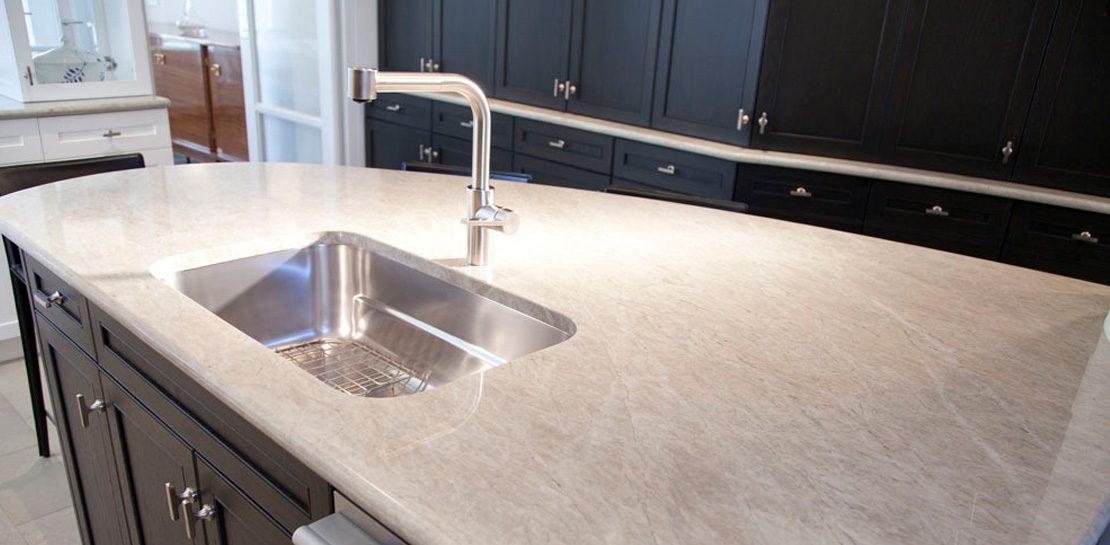- 11th February 2016
- Posted by: Granite & Marble Specialties
- Category: Quartzite

It can be very easy to conflate quartz and quartzite. Not only do they have very similar names, but they are very similar materials, and there’s a great deal of confusion surrounding the differences.
Unlike a “quartz countertop,” which is a mixture of approximately 93 percent ground quartz with resin and pigments, quartzite isn’t manufactured stone. Quartzite is naturally-occurring metamorphic rock. It comes from sandstone, and like marble or granite, it is the product of tectonic heat and pressure, and mined from the earth in solid slabs which are later cut by the manufacturer.
Because quartzite isn’t created from a composite of heated and poured materials, one has fewer options in terms of color and pattern. With quartz, you can adjust the style of the pour or pigmentation to create a vast array of colors and textures; with quartzite, you will only be able to get what’s produced by the earth. Luckily, the options are many, and typically gorgeous. Many people prize the variation and irregularities that can only come with a piece of stone created entirely by nature, and quartzite has those traits in spades. Waves of veining, spots of color, and natural variation that humans could never replicate are all features that make quartzite so appealing.
Despite the different composition processes of quartzite and quartz, both are extremely hard, enduring materials, Quartzite rates even higher than granite on Moh’s scale of hardness. If you want a countertop in a high-traffic kitchen where the countertops will be seeing a great deal of action from pots, pans, knives, and ingredients, quartzite is perfect. However, unlike quartz, quartzite will require some maintenance, and will need to be properly sealed anywhere between every six months to every two years in order to keep it from etching or staining.
